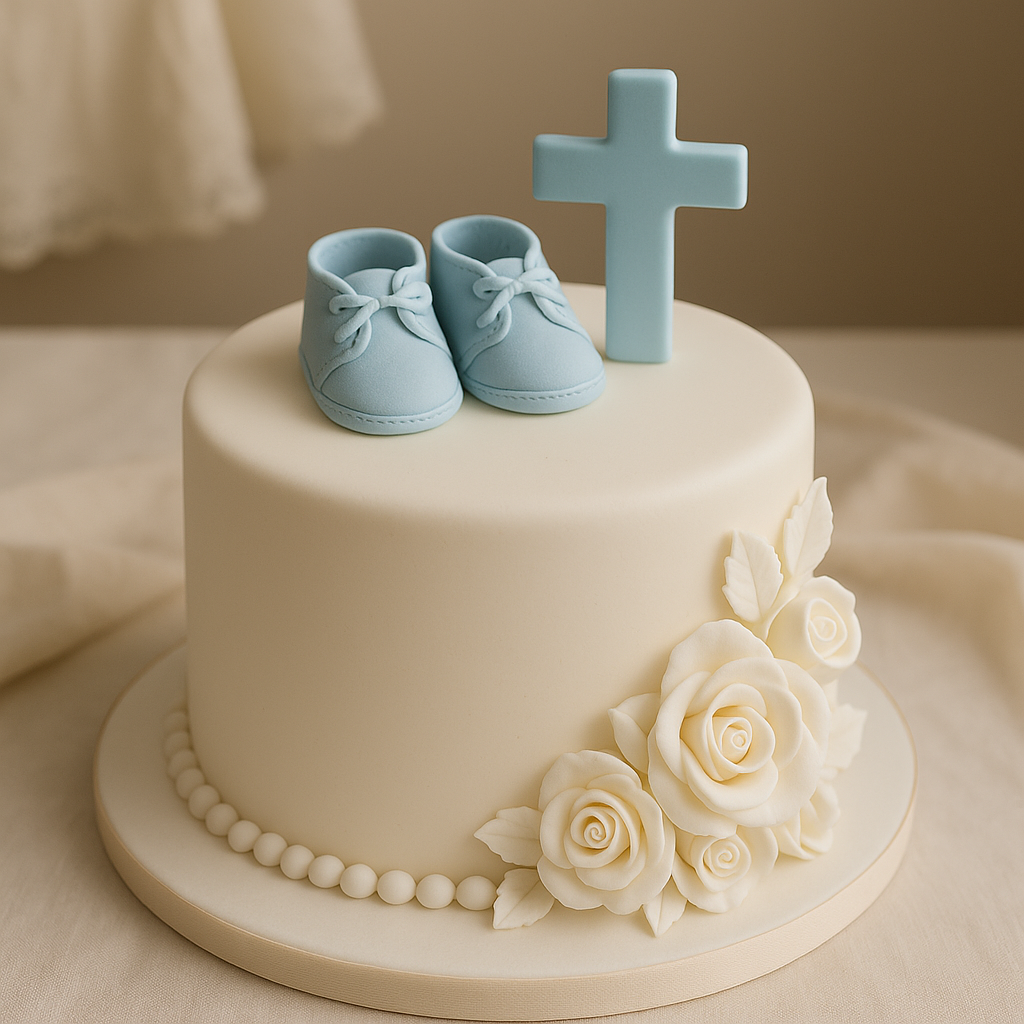
In an increasingly automated world, the question lingers—can artificial intelligence replicate the emotional essence behind time-honoured traditions like christening cakes?
The Intersection of Tradition and Technology
Christenings are deeply personal milestones, rich with cultural meaning, spiritual significance, and multigenerational emotion. While the broader event may evolve to include digital RSVPs or livestreaming for distant relatives, some elements resist automation. One such enduring element is the christening cake—a sweet centrepiece that holds more than just sugar and flour.
As artificial intelligence continues infiltrating creative industries, we’re beginning to see AI-generated cake designs, event planning tools, and even speechwriters marketed for personal celebrations. The draw is obvious: speed, efficiency, and a curated aesthetic. But what happens when AI tries to step into the world of sentimental expression?
To explore this, we must understand the deeper role that christening cakes play in these sacred events.
Why Christening Cakes Still Matter
Cakes have always been symbols in celebrations—whether for birthdays, weddings, or baby blessings. In a christening, the cake often reflects family values, religious heritage, and a sense of welcome into the wider community. It’s not uncommon to see crosses, angels, rosaries, or personalised messages in the design.
These cakes are not just desserts. They’re edible keepsakes that communicate care and thoughtfulness. Grandparents may order them as a gift. Parents may select details that align with family traditions. In many cases, these cakes are frozen and preserved as mementos, shared again on later anniversaries.
This makes them emotional anchors—not just menu items.
To understand how AI might replicate this, we must examine how it’s being applied to celebration design today.
How AI Is Entering the World of Celebrations
AI is now playing a growing role in helping users plan events. Platforms can generate invitation templates, propose colour schemes, draft blessings, and even recommend themed cakes. Some tools offer cake design suggestions based on selected keywords, trends, or uploaded images.
These tools draw on vast datasets from Pinterest, Instagram, and baking blogs to generate “optimal” results based on likes, tags, and visual appeal. But while they may match aesthetics, do they understand context?
A digital generator might offer a pastel cake with a cross because it identifies popular christening symbols—but would it know your child is being named after a grandparent, or that you prefer subtle tones from your family’s country of origin?
It’s the nuance that’s often lost.
You can read more about how emotional meaning is interpreted in AI tools in this related article on AI and Human Emotion.
The Limits of AI in Sentimental Design
Despite impressive progress, AI still falls short in mimicking emotional depth. It may detect visual patterns, but it cannot feel sentiment. It can suggest, but it does not know the client.
When it comes to something as personal as a christening cake, families often want details that aren’t captured in algorithms. A hand-piped dedication, a sugar-crafted family heirloom, or a design based on a grandparent’s old photo—these requests rely on empathetic creativity, not machine logic.
That’s why many families still prefer to work with human artisans—creators who take the time to ask questions, learn your story, and offer guidance based on more than metrics.
For instance, many turn to Pearl’s Creations for beautiful christening cakes—a trusted source for custom cakes that balance traditional motifs with contemporary elegance. These aren’t templates—they’re handcrafted designs, created through conversations and care.
Where AI Might Help—But Not Replace
That said, AI isn’t completely out of place. It may help in areas like:
- Gathering theme inspiration from online galleries
- Suggesting trending colour palettes
- Drafting guest lists or coordinating dietary restrictions
But AI is best positioned as a support tool, not a stand-in. It can’t attend a consultation and notice a parent’s tears of joy. It doesn’t know what it means when a cake has to match a christening gown passed down for three generations.
Instead, AI should assist skilled professionals—not substitute them.
You can explore this further in The Future of Human-AI Collaboration, which discusses how human judgement enhances creative technologies.
Emotions That Deserve a Human Touch
In the end, christening cakes are about more than aesthetics—they’re a quiet act of love. A soft sponge with baby-blue ribbon might look simple to outsiders, but to the family, it’s filled with stories. Of a first child. A long-awaited ceremony. A shared prayer. A legacy.
While AI continues to change how we work and celebrate, some traditions—especially those steeped in emotion—still need a human touch. Technology can assist with the framework, but it may not yet match the heart behind each detail.
And when it comes to moments as meaningful as a christening, that heart may be the most important ingredient of all.